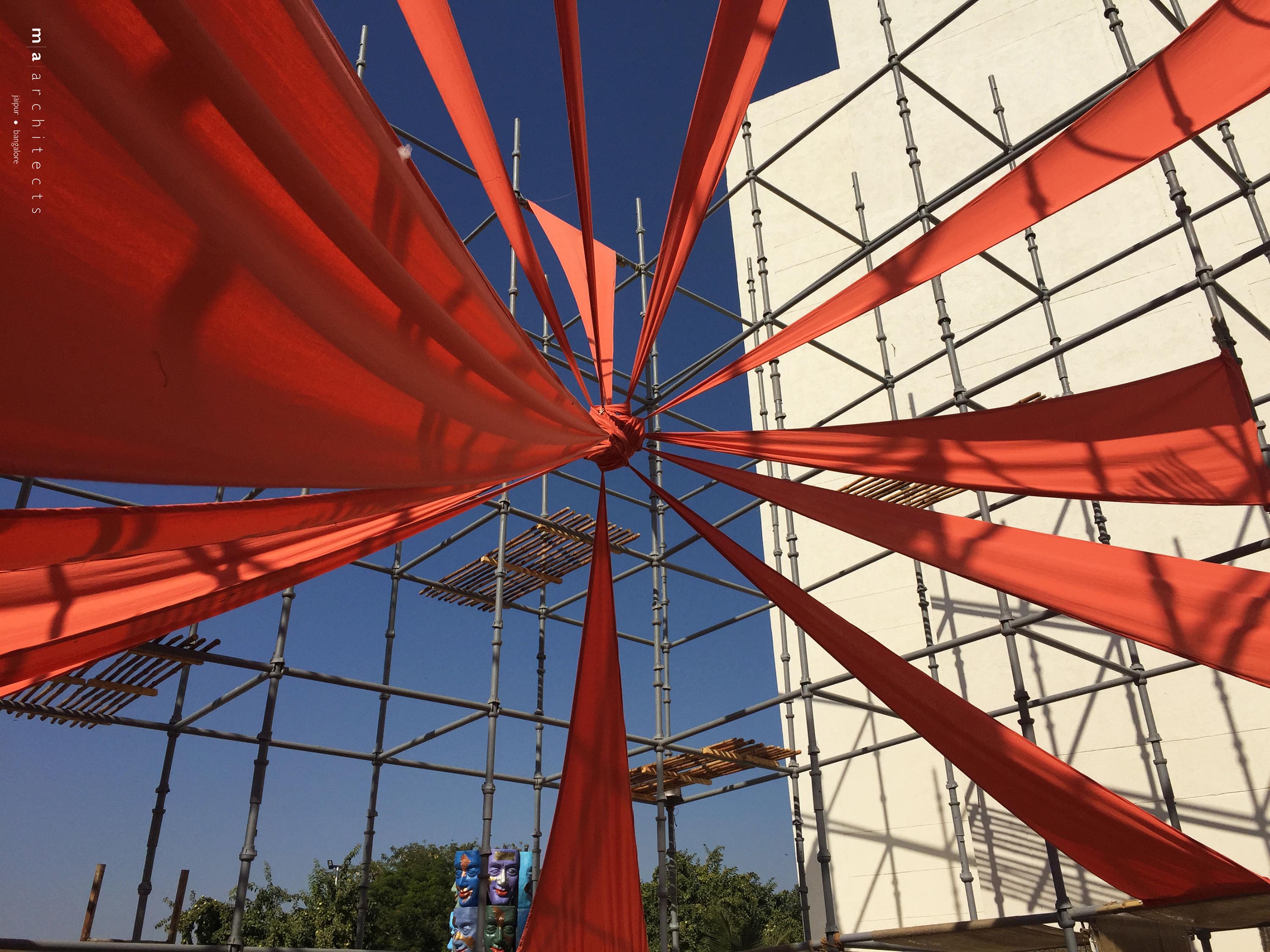Designed by ma architects, the ‘burlap house’ celebrates spaces of interaction and represents node of collaboration and socialization held together by individuals from different walks of life.
Amid Jaipur Art Summit in 2016, the ultimate goal of the convention was to showcase creative arts across multiple mediums and formats existing in India and to bring together artists to stimulate a cultural exchange, which forms the basis for inspiring new art production. In this context we built a structure to motivate communication between masses for exchange of ideas.
The ‘burlap house’ celebrates spaces of interaction and represents node of collaboration and socialization held together by individuals from different walks of life.
It is a public space intervention which goes for initiating outdoor activities of the local community at various levels by providing a space for social interaction and a platform to artists to work and showcase their ability.

Various nodes are spread throughout the fabric of a city. They are an indispensible part of the social framework where individuals from all stages turn up for amusement, collaboration and exchange of ideas and experiences. Distinguished mannerism and shifting length of the fabric represents individuals from various fields and phases of life. The node in the centre illustrates the coming together of such people to meet and share thoughts.
Metal poles, taken from the scaffolding of the building industry, were used for creation of a pavilion that duplicates a construction site to provide the visitors and artists with a virtual constructive space, where on site execution in the form of art would take place. The pavilion in collaboration with ‘Tapri- The Tea House’, houses a cafe with an art gallery surrounding it, with canvases flanking both its sides.
The total area occupied by the installation is about 100m2 with a height of 9m. It follows a grid of 1.5m x 1.5m, hence providing ample space for movement in the art gallery. Size of the cafe is 6m x 6m.
Project facts:
BURLAP HOUSE
Location: Ravindra Manch, Jaipur
Built-up Area: 100 sq m.
Project Year: 2016
Budget: Rs 50,000/-

















